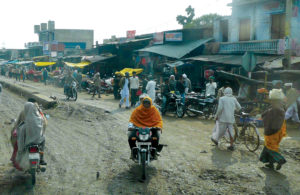Relocating from the city to smaller towns will not offer respite from air pollution. The real solution is clear policies on clean energy
Recently, Delhi introduced for the first time a fleet of electric buses in the city — that too a whopping 1,000 buses. Such measures are required on priority basis in all the states. Electrification would drastically reduce oil import dependency and contribute to initiatives for cleaner air. It should be followed by a comprehensive e-vehicle policy.
Certainly, no one wants to live in a polluted environment. Concerned about pollution in Delhi, my father asked me to return and settle in my home state, Bihar. That was two years ago. Since then, Tier-II cities have started featuring in the most polluted cities of the world.
Now his survival plan has changed. He wants to shift to a greener place. However, such coping strategies emerge out of privilege. Not everybody can relocate, particularly as jobs can only be found in cities, big and small.
Gone are the days when Air Pollution was just an essay writing topic in inter-school competitions. Today it’s a recognised fact that air quality is a serious concern and India is among the most affected geographies in the world. Various reports, including the latest Greenpeace and Air Visual 2018 Global City Ranking Report on PM2.5 concentration, reinforces that 22 out of 30 most polluted cities on the globe are located in India. According to Lancet Report 2018, air pollution accounted for 12.4 lakh deaths in India. WHO’s annual report 2018 highlighted that air pollution is responsible for premature death of seven million people each year, including 6 lakh children.
During October to December, peak stubble burning months in farms across northern India, deteriorating air quality of Delhi-NCR invokes environmental consciousness in newsrooms. In the process, the glaring fact that is ignored, is that most Tier-II cities of India regularly feature in the world’s most polluted cities. Yet heavily polluted small towns like Bhiwadi, Patna, Muzaffarpur, Varanasi, Moradabad, Agra, Gaya and Jind do not draw the same amount of attention as Delhi-NCR.
These regions are not contextualised in terms of the larger global crisis. Citizens believe that pollution stems from two sources: one, vehicular pollution and two, waste burning. They have fair reasons to rely on their understanding as these cities are yet to witness massive industrialisation and large-scale urbanisation. Neither elected representatives nor the local administration seems to have a vision about solving this problem.
Actually, Tier-II cities are victims of the ‘blue skies’ syndrome: Clear blue skies belie worsening air quality. Vehicular pollution, road dust and excessive use of fertiliser and pesticides in agricultural fields hugely contribute to finest particulate pollution, PM2.5. Studies have revealed that vehicular pollution and road dust re-suspension are the main source of dangerous PM2.5.
With the developing economy and real estate boom, old houses in such cities are acquired by builders and turned into huge buildings. The apartment culture has cropped up. Most of such construction activity is unplanned and does not strictly adhere to anti-pollution laws.
Hordes of automobile showrooms selling vehicles with petrol and diesel combustion engines have brought luxury vehicles within reach through low-cost EMIs. Consumers compete to own the shiniest new models. Easy availability of technology also empowers the middle and lower income classes, who wouldn’t have had a car if finance were not available.
Overall, the menace of pollution can be termed as the result of ‘developmental ideology’ where small towns compete with big cities ignoring their geographical conditioning.

Curbing pollution at local level requires coordination over a geographical region across cities and provincial boundaries. Again, our policies have proved a failure in shifting or phasing-out the energy liabilities to renewables. To be more precise, we need clean energy for clean air.
Today bad air quality and water crisis are the two major determinants of the quality of life for millions of Indians. Thermal power plants have negative impacts on both water and air. And unfortunately, 40% of India’s coal power plants are remotely located in areas of high water scarcity.
Coal burning is also a major generator of hazardous air pollution. In contrast, renewable energy technologies use much less water and do not generate air pollution. This is important as commitments made by developed countries under the Paris Agreement are thus far insufficient to meet the 2-degree temperature rise goal, let alone the more ambitious 1.5-degree goal that science says we should aim for.
Decarbonisation of electricity sector and decentralised solar (such as solar pumps, ground mounted solar arrays, micro grids and replacement of diesel generators in farmlands with solar backed up with battery storage) is the need of the hour. Strict enforcement of new emission standards for coal power plants on sulphur dioxide, nitrogen oxides and particulate matters are critical.
Till date, only National Clean Air Programme (NCAP) seems to be a single step worthy of apprecation in a long battle against pollution. But for it to be meaningful it must be followed by other measures. Such as: NCAP needs to be urgently notified under any relevant act like The Environment (Protection) Act, 1986 or the Air (Prevention and Control of Pollution) Act, 1981. Unless NCAP is legally binding on both the authorities and polluters, it would continue to be a normative law.
This is crucial since current ambition levels under NCAP (20-30% air pollution reduction by 2024) will not lead to breathable air quality in the country. This is because pollution levels across much of the country are so high that even a 30% reduction will still leave levels above NAAQS, not to mention WHO standards. It is worth mentioning here that NCAP has potential of serving as a stronger instrument to tackle the ‘blue skies’ syndrome.
It’s high time that India starts working on phasing out stranded coal assets into working renewable energy plants to mitigate climate change and facilitate clean air to all. We cannot now afford to have a policy where thousands of crores are allocated for coal power plants while at the same time announcing funds for NCAP.





